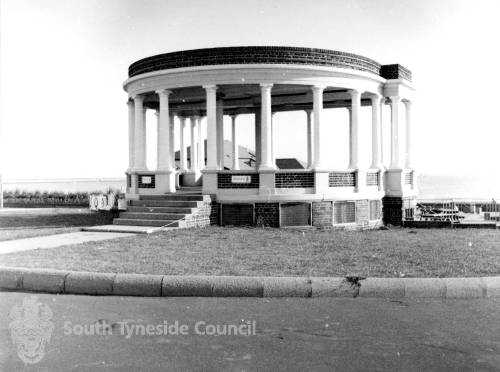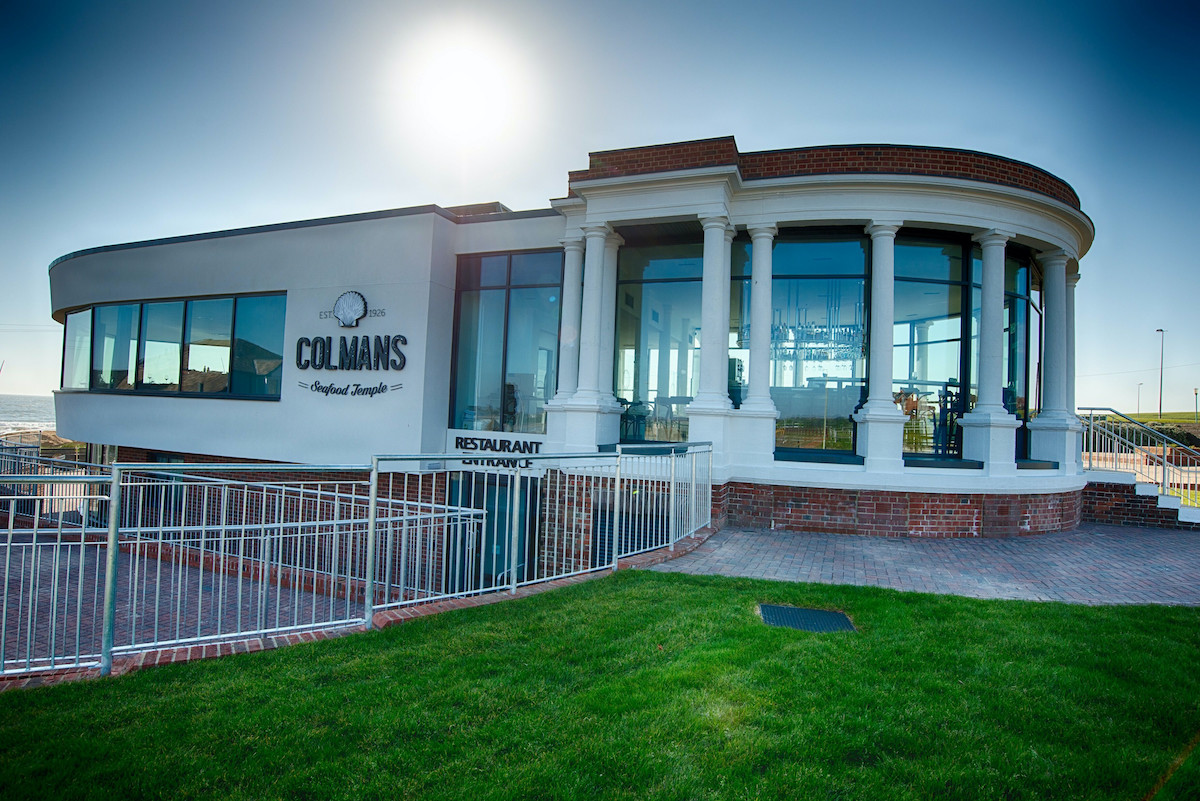
‘Gandhi’s Temple’, a locally coined, and popularly adopted, nickname with no certain provenance, refers to our iconic building.
The name clearly refers to the columned, neo-classical, design of the building, and there is no link whatsoever with Gandhi the historical figure. The building appears on the Local List for South Tyneside, and is considered a locally significant heritage asset. The Local List is however incorrect in terming the building a bandstand, although this may reflect its latter usage (South Tyneside Council 2011b, 111-112). As originally constructed, the building was intended to serve as a shelter and public lavatory, and this is how it was described within the The Shields Daily Gazette and Shipping Telegraph (now The Shields Gazette), which covered its construction.
The building was originally constructed in 1931, with the Gazette carrying a picture of its construction well underway on 1st July 1931. On 18th September 1931 the Gazette carried a further picture of the building ‘nearing completion’, with a caption stating that the building would be offcially opened the following day, giving Saturday 19th September 1931 as the offcial opening date. Currently the building continues to fulfl its original designed function as a public lavatory at half-basement level, with a columned, open-sided sheltered area above. Almost no change has occurred to the building throughout its life, standing today almost exactly as originally built. This very limited alteration to the building over time is evidenced by its appearance in plan on maps, which show no visible alteration, extension or removal of built fabric (see Historical Map Regression below), as well as the picture of the building shown in the Gazette of 18th September 1931, which shows the building to be virtually unchanged in comparison to today.


The provision of this partitioning makes sense of the two square columns centrally placed within the upper storey of the building, which clearly would have fulflled a function in supporting that partitioning, as well as the roof, but do not work well in creating the open space and sightlines required of a bandstand. Further to this, the provision of a shelter and public convenience at this location makes signifcant planning sense when considering the building’s position close to the end of the developing South Beach Promenade, at a signifcant distance from comparable facilities provided closer to the centre of South Shields in and around North and South Marine Parks to the north. The provision of a bandstand at this point makes much less sense, particularly given the building’s proximity to the road at its western side.
Lovingly refurbished with great respect for its local history and significance, the Colmans family re-opened the temple as a seafood restaurant in May 2017.

